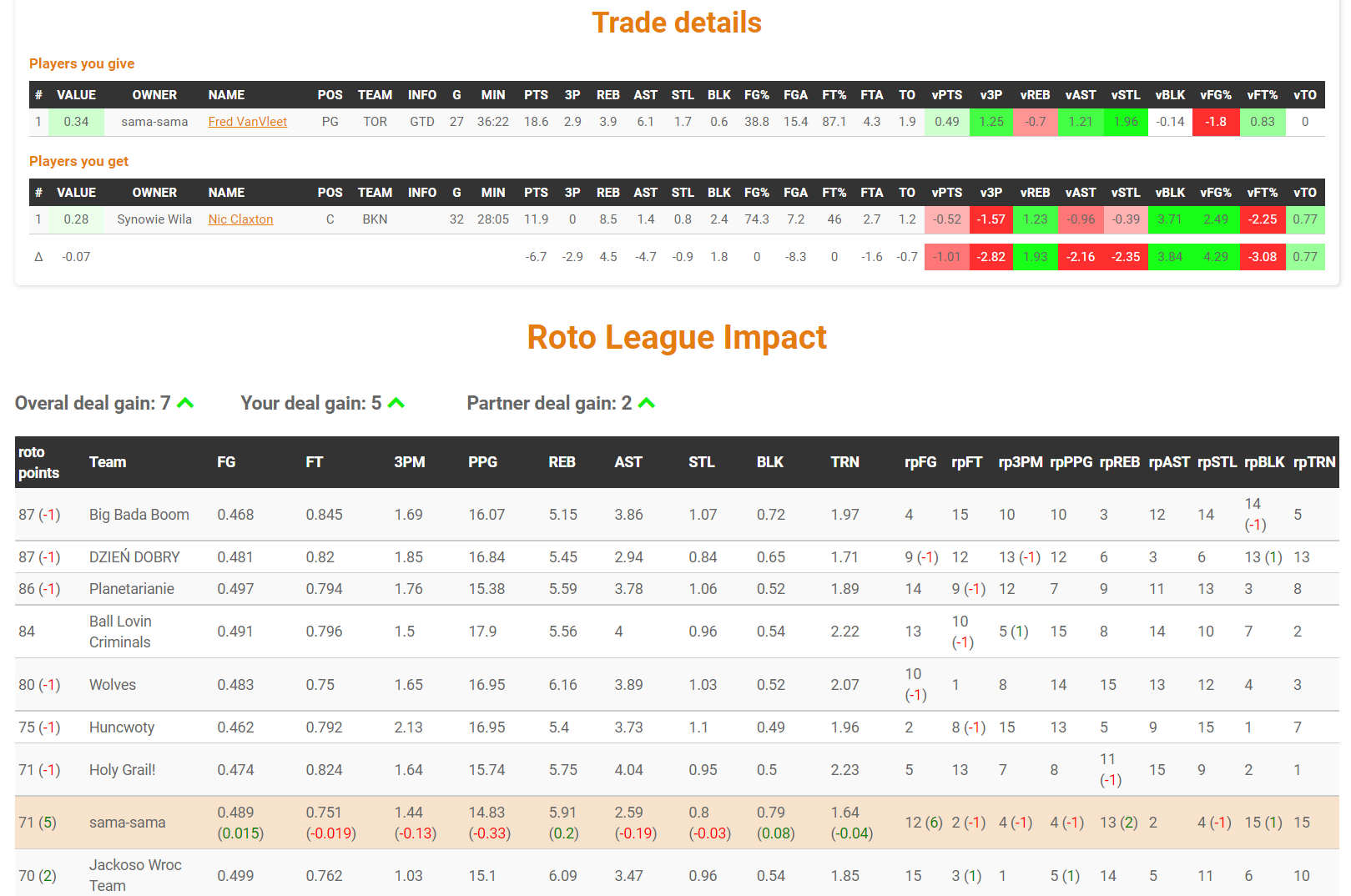I got really into fantasy basketball this season and wanted to up my game when it comes to trades. So I decided to build a tool to help me analyze potential trades, and I figured, why not share the whole process with you guys?

Getting Started
First, I needed data. I mean, what’s a trade analyzer without actual player stats, right? I started scraping some popular basketball websites. It was a bit of a pain, honestly. I used Python for this, along with libraries like Beautiful Soup and Requests. Getting the data was one thing, cleaning it up was another. Websites structure their data in so many different ways, it took a good chunk of time to normalize everything.
Crunching Numbers
Once I had a decent dataset, I started to think about what stats really matter in fantasy trades. Points, rebounds, assists are obvious, but then there are percentages, steals, blocks, and turnovers to consider. I decided to weigh each category differently based on my league settings and my personal valuation. This was a bit tricky, and I spent a lot of time tweaking these weights.
I ended up building a simple algorithm in Python that calculates a player’s overall value based on these weighted stats. The idea was to compare the total value of players I was giving away versus the value of players I was receiving. Seemed straightforward enough.
Building the Interface
Now, I’m not a front-end guy, but I wanted something more than just a Python script I run in the terminal. I decided to use a basic web framework like Flask to create a simple interface. I threw together some HTML and CSS, enough to input player names and display the trade analysis results. It’s not pretty, but it works.
It lets me input the names of the players involved in the trade, and then it fetches their stats, runs them through my algorithm, and tells me if the trade is good, bad, or neutral based on my valuation.
Testing and Tweaking
I spent a good amount of time just testing this thing out with different trade scenarios. I used historical trades from my league and even made up some hypothetical ones. I found myself constantly adjusting the stat weights. For example, I initially undervalued three-pointers but realized they were more crucial in my league than I thought. It was a lot of trial and error.
Real-World Application
Finally, I started using it for actual trades. The first few times, it was nerve-wracking. I mean, what if my analysis was way off? But it turned out to be pretty helpful. It gave me a more objective way to look at trades, beyond just gut feeling or name recognition.
One time, it flagged a trade as heavily in my favor when my gut was telling me it was risky. I ended up making the trade, and it worked out great. That’s when I really started trusting the tool.
The Never-Ending Project
Of course, it’s not perfect. There are always unexpected things like injuries, schedule changes, and team dynamics that are hard to quantify. I’ve been constantly updating the data and tweaking the algorithm based on new information and my league’s specific settings. Also, it can not deal with keeper things.
I also want to add features like multi-team trade analysis and maybe even a way to predict future performance, but that’s a whole other can of worms.
In the end, this tool has made me a much more informed and strategic player in my fantasy league. It’s been a fun and practical project, and I’m excited to keep improving it. If you’re into fantasy sports and coding, I highly recommend giving something like this a try. It’s a great way to combine two passions and learn a ton along the way. This is a fun personal project that I really enjoy.